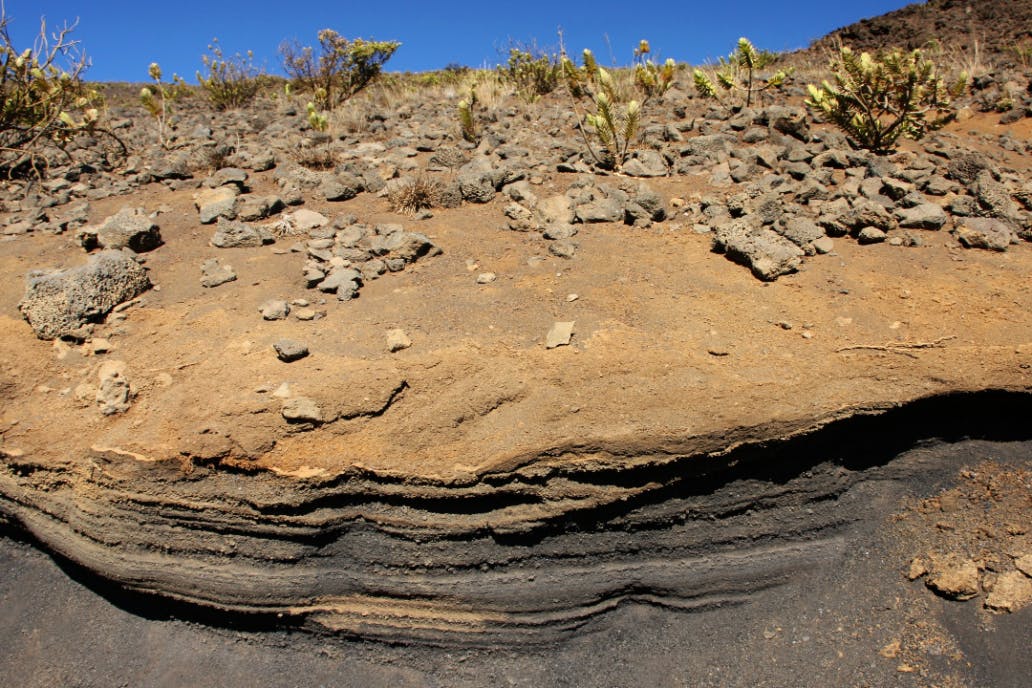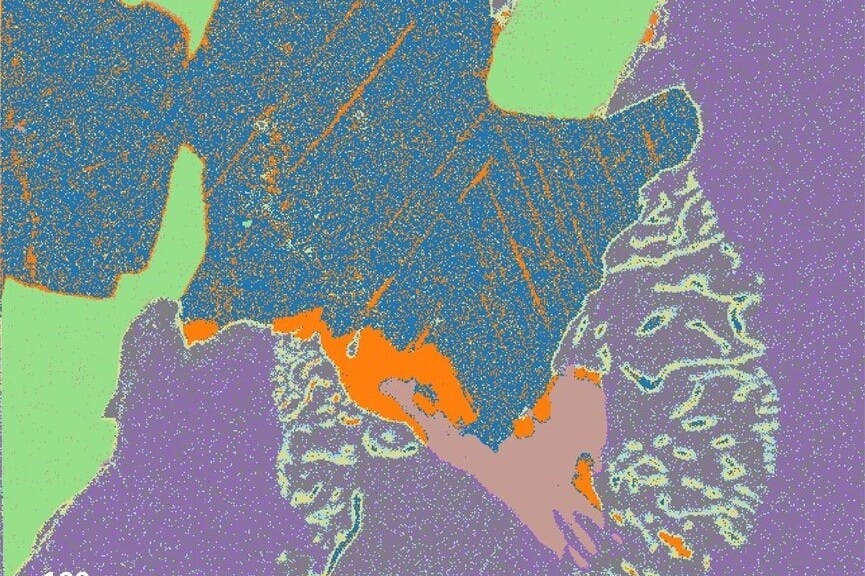Clump DB
ClumpDB uses the EarthChem Library as a permanent repository to store raw (replicate-level) clumped isotope data and associated meta-data, with easy, universal access.
The partnership between the clumped isotope community and EarthChem began as part of a community-wide effort in 2019 to reprocess, compare, and reconcile published carbonate clumped isotope calibration data measured in many different labs. It was discovered as part of this project that many published papers lacked the level of information, even in supplementary material, necessary to be able to update and reprocess data using new standard values or new data processing practices. In order to facilitate future reprocessing and/or data compilation efforts and to keep older data relevant and usable as the community progresses, this EarthChem collection was created. Although initially populated with carbonate clumped isotope data (D47), this collection welcomes other clumped isotope data as well (CH4, O2, etc.).
Getting Started
Data Submission Workflow
Please review the guidelines for tephra-specific submission templates below. The tephra data templates are meant to facilitate and standardize data reporting, following the best practices identified by the tephra community. Before you submit your data to the EarthChem Library, please ensure that you have the relevant method and sample information, as outlined above.
In addition, ensure that your submission is in compliance with ECL's Submission Guidelines and Policies to ensure the most efficient curation process.
Preparing your data files
The first step is to prepare your data in the appropriate format for submission. Clumped isotope data should be submitted in large table format, including all sample and standard replicates.
We strongly recommend the use of the clumped isotope data submission template found at [link]. If a template does not yet exist for your type of clumped isotope data, you may edit an existing template to fit your needs or contact us at info@50.16.114.67 or sierravp@umich.edu about designing a new one.
You can submit data from a publication/study as one combined template file, or separate it into multiple template files that can be linked together as one submission. This may be appropriate in the case of having two distinct types of samples in a single study that may like to be accessed separately at a later date (e.g. modern calibration samples and paleoclimate samples).
EASOTOPE USERS: Along with your completed template file, you may also submit a zipped database file or files (including raw cycle-level voltage data), as long as each file is under 20MB. If needed, split into multiple zipped database files by measurement session.
File Format
- Submitted data tables should be in the above linked ECL template, if possible, but must at the very least be in a .csv, .txt, or .xlsx file (not in .pdf, .docx, .jpeg, etc.).
- A maximum of 20 files can be submitted together, including the template file.
- Each file has a maximum size of 20 MB.
- Zipped database files must be in .zip format.
Data & Metadata
- All analytes, units, and methods must be clearly stated and defined. Relevant standards, reference measurements, and additional information about laboratory and instrument should also be included when possible.
- Every analyte must be linked to a sample with a name and geospatial information (unless not applicable, i.e. experimental samples).
- We strongly recommend use of IGSNs (International Geo Sample Number) as persistent identifiers to identify samples. Obtain IGSNs by registering samples in the System for Earth Sample Registration (SESAR).
References
If submitting a compilation dataset, the ECL requires a reference sheet or tab with full citations of all referred publications.
Clumped Isotope Templates
The clumped isotope EarthChem template for D47 (CO2 and carbonate) was designed with feedback from the clumped community. The goal of this template is to include all information needed to convert raw, replicate-level sample isotopic compositions to final sample mean values, fully corrected into the absolute reference frame (ARF). This template is designed to be flexible and accommodate the many different measurement schemes used in clumped isotope labs around the world. Overall, it is highly recommended that data be uploaded using this template to make it easier to combine data from different projects in the future. However, since we believe it would be better to upload and archive data in another format than not to archive at all, other formats will be accepted into this database (but please use the template if at all possible).
This template includes 3 types of columns/cells: required (green), optional (white), new/customizable (yellow).
Required Fields
Columns/cells highlighted in green define the minimum necessary information to convert raw D47 data to final values.
This includes all replicate-level isotopic values for samples and standards (d45-d47, D47), as well as information about working gas composition, which types of standards were used in the ARF correction, where measurement session and correction window breaks occurred, which acid fractionation factor was used, etc.
All of these columns must be completed.
Optional, Standardized Fields
This template also includes many white columns/cells which represent optional additional information at the study, sample mean or replicate level. In many cases, these columns represent information which should be easily available but is not deemed to be absolutely necessary for going from raw to final data (e.g. ‘sd_d45’, the standard deviation on d45).
Some of these will only be useful for a specific type of study (e.g. the ‘Species’ column is not useful for a study of paleosol carbonates, but may be vital for a foram-based study). We have included many optional columns in this spreadsheet in order to standardize this extra information where possible.
For example, if later on someone wanted to compile all clumped isotope calibration data from soil carbonates, compilation efforts would be much easier if all studies had submitted their assigned calibration temperature under the ‘FormT’ (Formation Temperature) column instead of one study calling that column ‘MAT’ and another calling it ‘FormT’ and a third calling it ‘LocalTemp’.
New/Customizable Fields
In addition to suggestions for optional columns provided in white, an individual dataset may require a specialized column (e.g. ‘PaleoElevation’), representing an additional variable only relevant to your particular study but not commonly reported.
In this case, we encourage users to include as much information as possible in the template to increase future usability.
Please design new column names and formats in alignment with the rest of the template, where possible.
Using the Template
The November 2020 template version (most recent) creates a map from sample geospatial information on ECL landing page and includes more optional columns. The original 2019 version of the clumped isotope template is available here.
If you have any questions about the clumped isotope templates, please contact Sierra Petersen (sierravp@umich.edu). If you are interested in submitting data from a different clumping system, we encourage you to contact to help develop a suitable template for other clumped isotope species.







